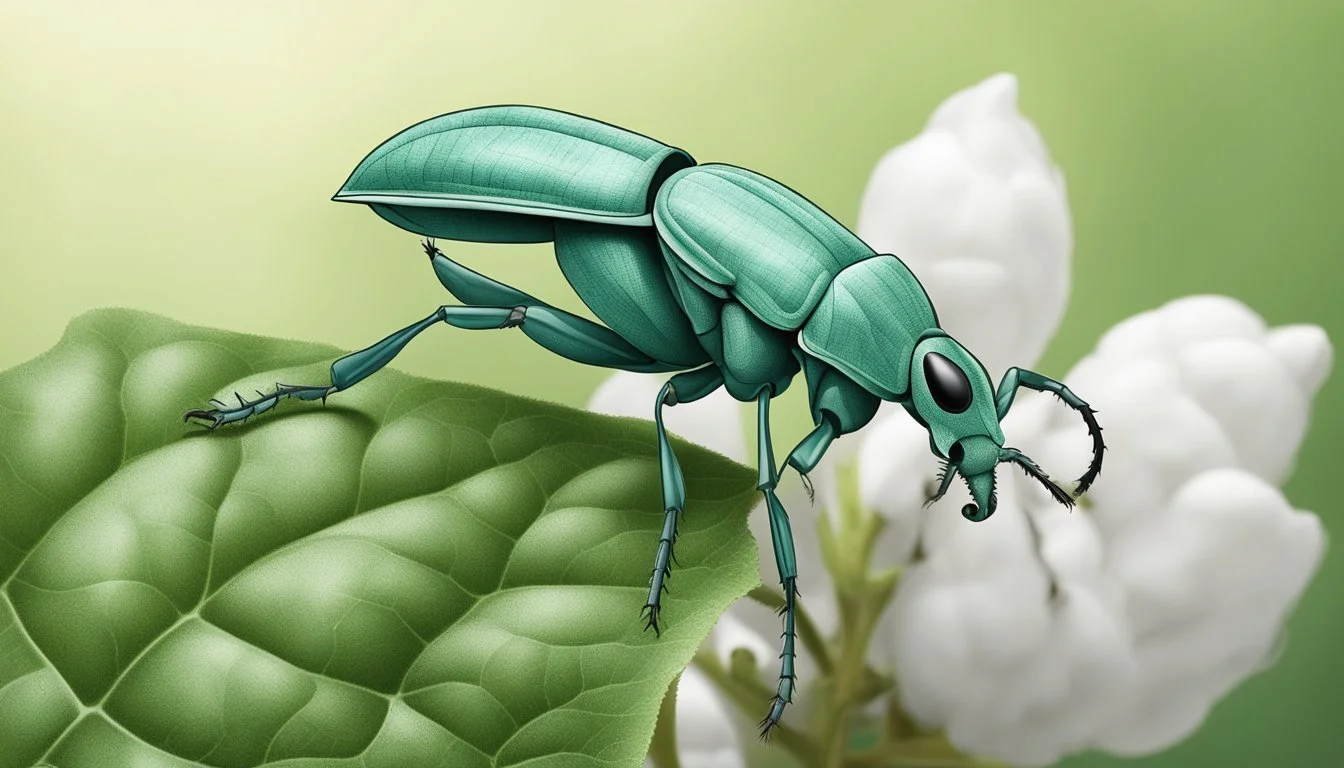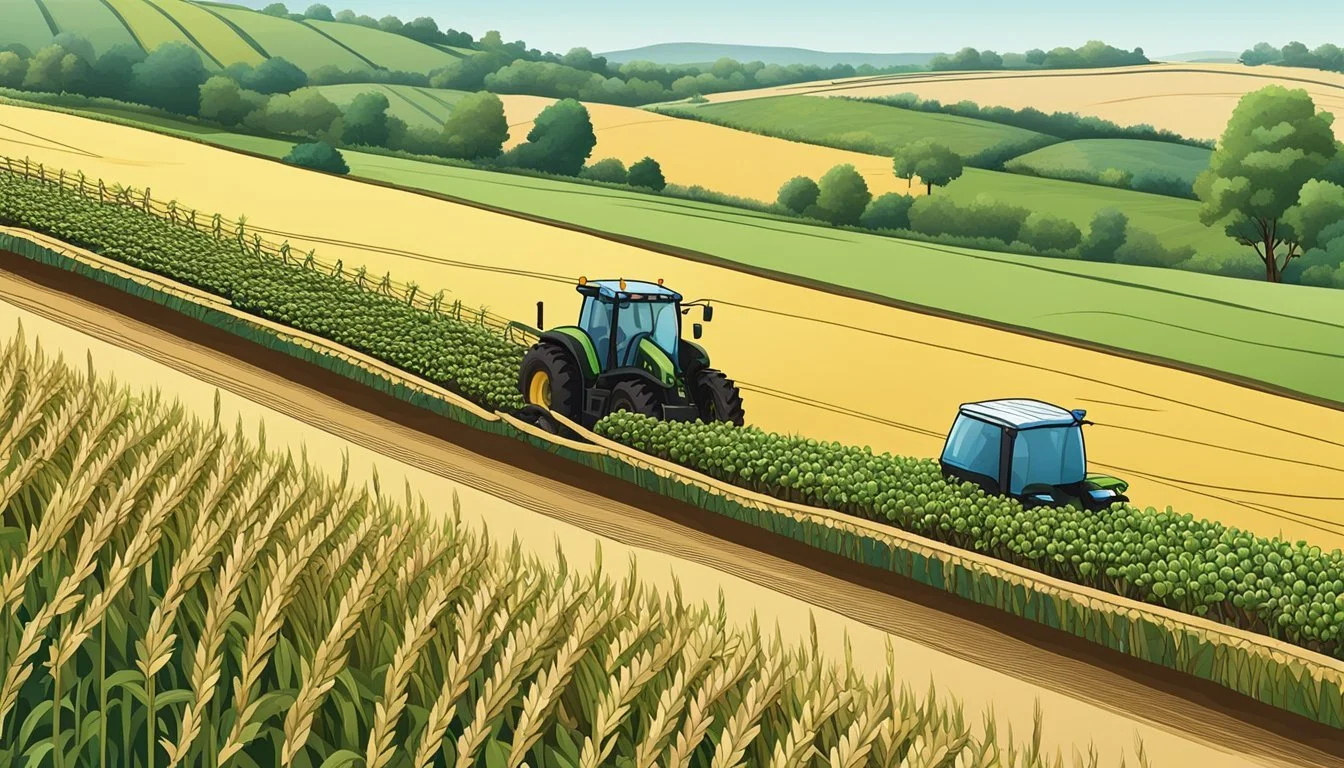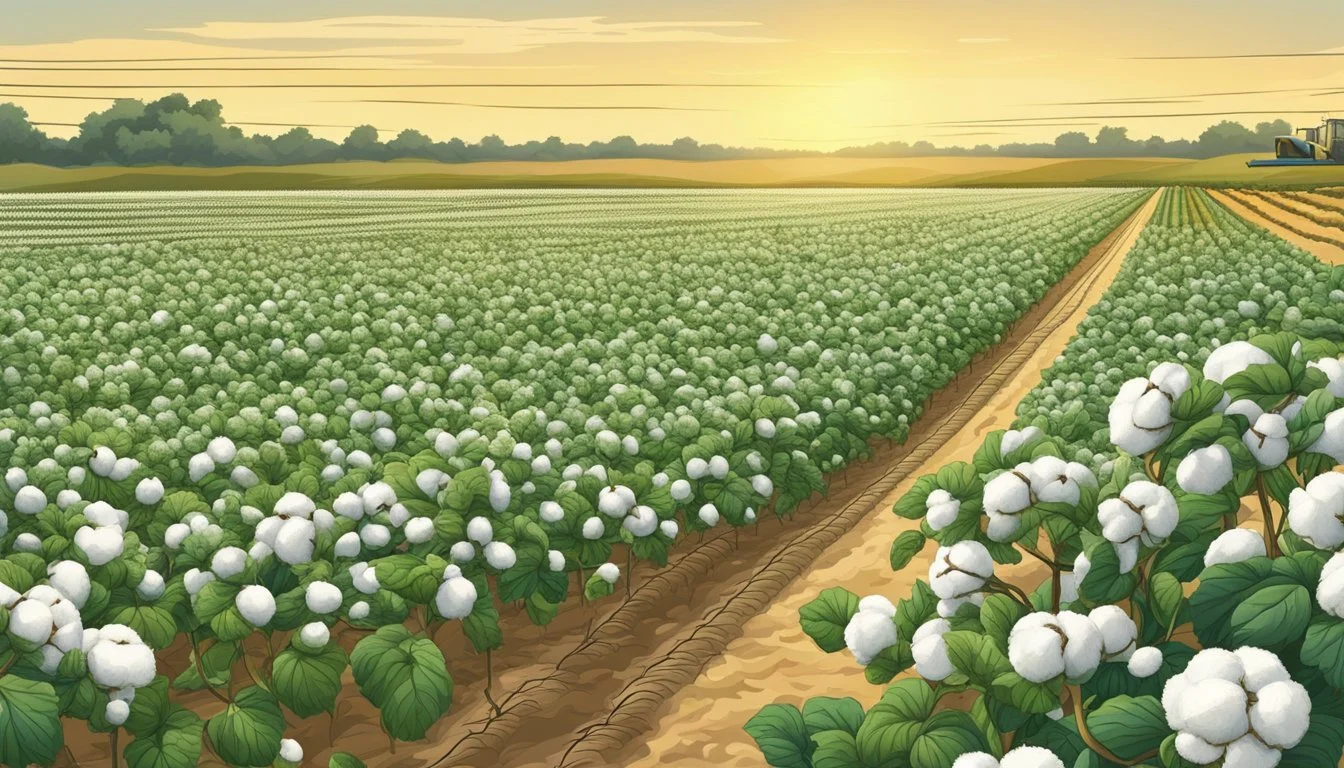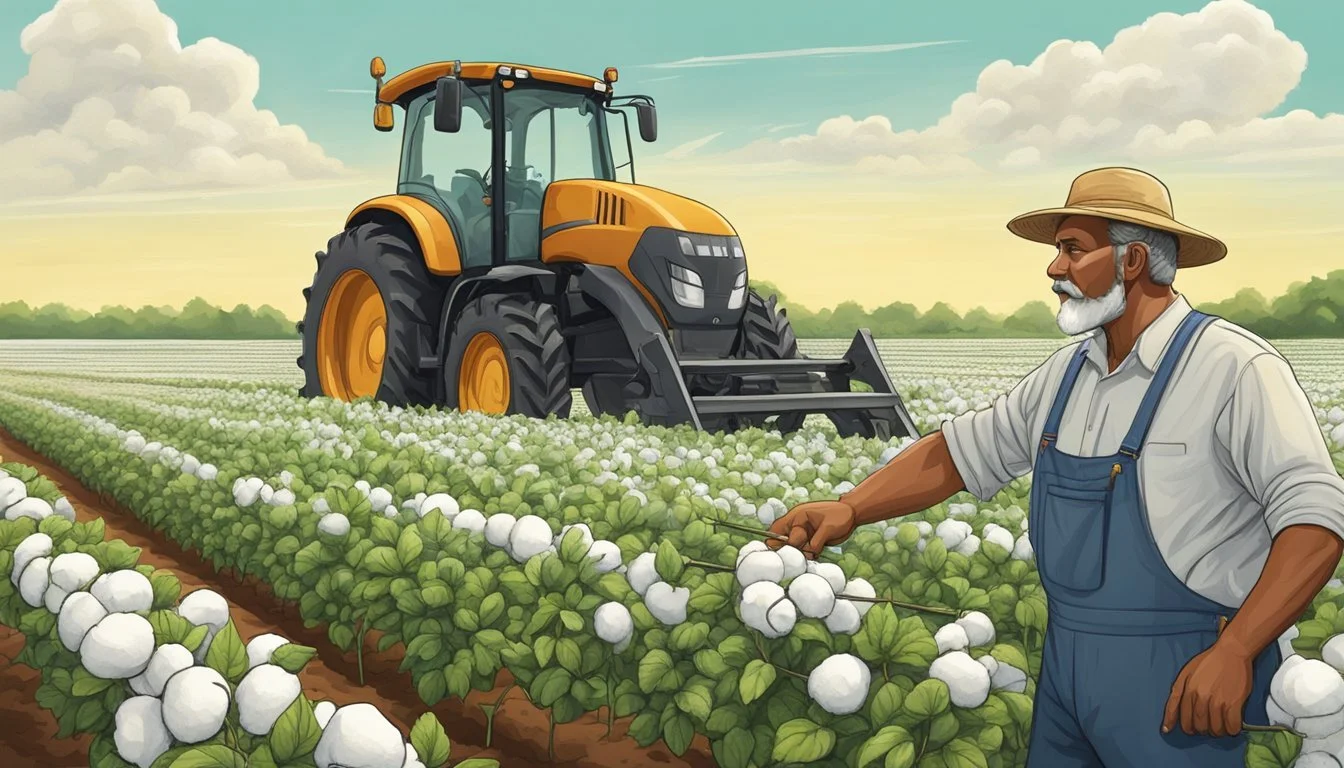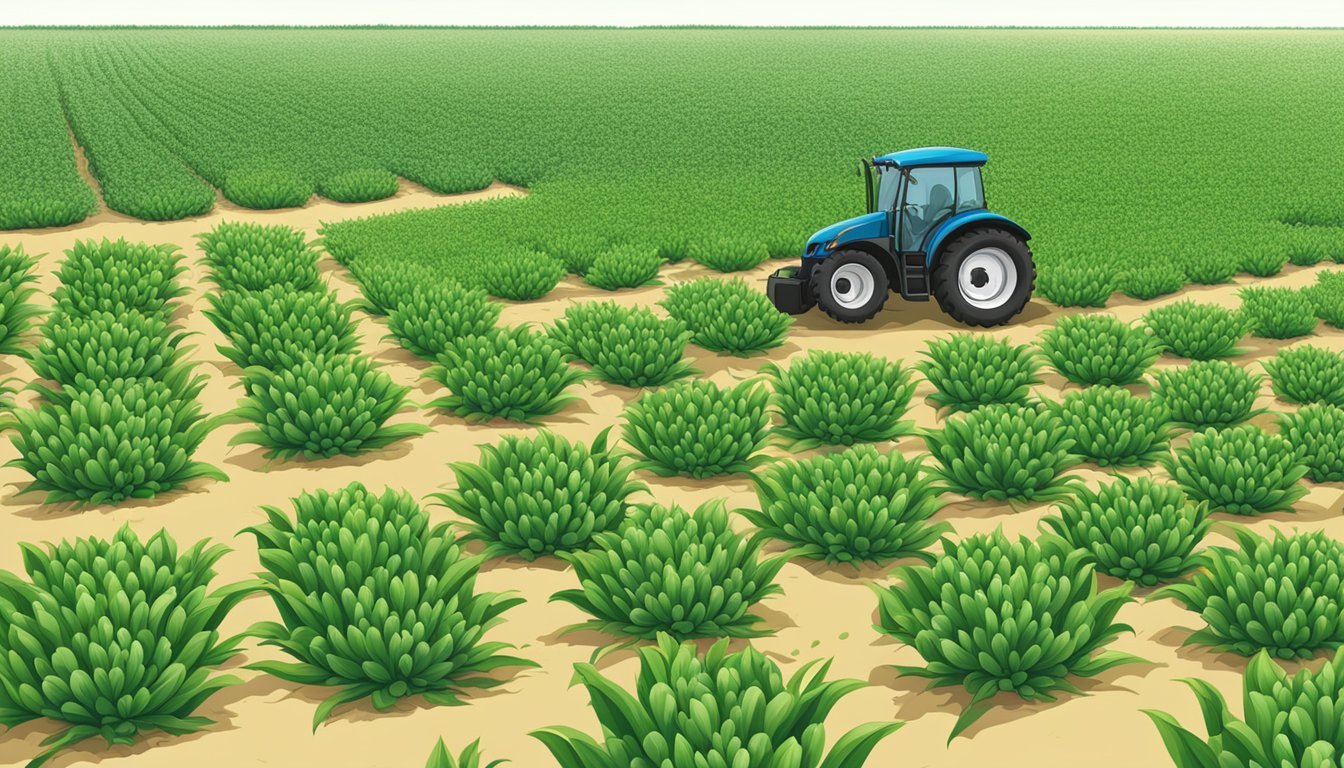Protecting Crops from Boll Weevil
Effective Management and Control Strategies
The boll weevil is a notorious pest in agriculture, particularly known for its destructive impact on cotton crops. Originating from Mexico, Anthonomus grandis made its way into the United States over a century ago and has since been a persistent threat to the cotton industry. This beetle's larvae feed on the buds and flowers of cotton plants, leading to significant reductions in cotton yields. Effective management and protection strategies against the boll weevil are crucial for the sustainability and profitability of cotton farming.
Successful eradication efforts and ongoing management programs have been significant in combating the boll weevil. The collaborative achievements, like the Boll Weevil Eradication Program, represent some of the most triumphant pest control initiatives in agricultural history. By integrating pest monitoring, use of pheromone traps, and timely insecticide applications, farmers and scientific communities have made considerable progress in protecting cotton crops from this pest.
Modern strategies continue to evolve, emphasizing more cost-effective and sustainable approaches to boll weevil control. These methods aim not only to prevent crop loss but also to reduce the environmental impact of pest management practices. Maintaining strong boll weevil protection is essential for the stability of the cotton industry and involves continuous review and adaptation of control measures to meet the demands of changing agricultural landscapes.
Overview of Boll Weevil
The boll weevil (Anthonomus grandis) is a small beetle belonging to the family Curculionidae. This pest poses a significant threat to the cotton industry due to its feeding habits, where adults target the buds and bolls of cotton crops. Despite its diminutive size, with adults measuring just 6 millimeters in length, the impact of boll weevils is immense.
Biological Classification Details Family Curculionidae Order Coleoptera Genus Anthonomus Species Anthonomus grandis
The lifecycle of the boll weevil consists of several stages: egg, larva, pupa, and adult. Females lay eggs inside cotton bolls or buds, which upon hatching, begin to feast on the plant, interrupting its growth cycle. Adults emerge from the bolls, ready to reproduce and continue the destructive cycle. Under favorable conditions, they can create multiple generations in a single year, exacerbating the damage to cotton fields.
The introduction of this pest into the United States in 1892 marked the beginning of an arduous battle for cotton farmers. Boll weevils wreaked havoc in the Southern United States, decimating cotton production and causing economic distress. However, through dedicated research and control efforts, cotton growers have seen some success in managing and mitigating the impact of this pest.
Historical Context
Understanding the boll weevil's journey from a regional pest to a national concern reflects a saga of agricultural adaptation and scientific achievement.
Origin and Spread
The boll weevil (Anthonomus grandis) is native to Mexico and made its first U.S. appearance near the Rio Grande in Texas around 1892. It spread rapidly across the cotton-growing regions of the Southeast, reaching Virginia and North Carolina by the 1920s. This small beetle thrives in warm climates and found the southeastern United States particularly hospitable for proliferation.
Economic Impact
As the weevil colonized the southeastern cotton belt, the pest caused catastrophic losses for farmers, decimating cotton crops and destabilizing the regional economy. By the early 20th century, the boll weevil had caused more economic damage than any other agricultural pest in the United States.
Control Measures History
Attempts to control the boll weevil began with rudimentary methods like hand-picking and pesticide application. In 1958, the National Cotton Council of America saw for the first time a concerted effort to develop broader strategies. The U.S. Department of Agriculture, with notable figures such as Edward Knipling, led innovative research and introduced integrated pest management techniques. These efforts evolved into formalized programs like the Texas Boll Weevil Eradication Foundation and the Southeastern Boll Weevil Eradication Foundation, which played crucial roles in significantly reducing boll weevil populations.
Biology and Behavior of Boll Weevils
Understanding the biology and behavior of boll weevils is essential for protecting cotton crops effectively. These destructive pests have a specific lifecycle, feeding habits, and survival techniques during adverse conditions.
Lifecycle and Reproduction
The boll weevil, Anthonomus grandis grandis, undergoes a complete metamorphosis with distinct stages: egg, larva, pupa, and adult. Females lay their eggs in cotton buds or fruit, choosing the species Gossypium hirsutum L., commonly known as upland cotton. Each generation can take around 3 weeks to complete under optimal conditions, with multiple generations occurring per season.
Feeding and Habits
Larval boll weevils feed inside cotton bolls, preventing the bolls from maturing properly. Adults feed on cotton buds and flowers, with feeding punctures often facilitating fungal and bacterial infections. The availability of cotton squares is critical for their sustenance and reproduction; they often search for squares shortly after emerging in the spring.
Overwintering and Diapause
Boll weevils can enter a phase of dormancy known as diapause to survive winter when temperatures drop and food sources become scarce. During overwintering, they seek shelter in leaf litter, crop residues, or other protective sites. Diapause allows them to withstand unfavorable conditions until spring, when they reemerge to locate the nearest cotton fields.
Impact on Cotton Production
The boll weevil significantly affects cotton production by causing yield losses and crop damage, impacting cotton quality, and triggering economic consequences. These effects pose serious challenges for cotton growers, threatening both the agricultural economy and the stability of the cotton industry.
Yield Losses and Crop Damage
The boll weevil is a notorious cotton pest that causes substantial yield losses. It has a high reproductive capacity, leading to several generations per growing season, exacerbating the extent of the damage. One study shows that due to their migratory behavior, these pests can rapidly spread across fields, affecting larger areas and multiple crops. They lay eggs in cotton buds, and the resulting larvae feed on and destroy the insides of the bolls, which can devastate a significant portion of a cotton crop.
Effects on Cotton Quality
Damage from the boll weevil not only reduces yield but also compromises cotton quality. Infested cotton bolls may fall off the plant before they can mature, leading to a lower lint quality and thus impacting the marketability and value of the cotton produced. Without proper management and control measures, boll weevils can significantly reduce the overall quality of cotton, affecting its suitability for various applications.
Economic Consequences
The presence of boll weevils can have dire economic consequences for the agricultural economy. The costs associated with managing boll weevil invasions and the financial losses due to reduced yields add up quickly. For instance, efforts like the South Carolina Boll Weevil Eradication Program demonstrate the necessity of funding eradication initiatives, which saved state cotton growers an estimated $132,234 in one year by reducing the per acre assessment charges, as highlighted by Cotton Grower. The success of such programs also indicates the ongoing financial burden that boll weevil management imposes on cotton producers.
Pest Management Strategies
Effectively managing boll weevils, a significant pest in cotton production, involves an array of strategies aimed at reducing its impact and presence in cotton fields. The chosen methods must target the pest with precision and consider the potential development of insecticide resistance.
Chemical Control
Insecticides play a critical role in the control of boll weevils. Malathion is one such chemical that has been extensively used. However, reliance on insecticides alone can lead to increased resistance among boll weevil populations. It is essential to use these chemicals judiciously and in rotation to deter resistance.
Cultural Practices
Cultural tactics involve altering farming practices to make the environment less hospitable for the pest. This may include early season stalk destruction to disrupt the boll weevil life cycle. Crop rotation and timely planting can also be effective measures to reduce boll weevil populations.
Biological Control
Biological control involves the use of natural predators or diseases to manage boll weevil populations. While this method can be environmentally beneficial, it often requires intricate knowledge of the ecosystem to implement effectively. Release of sterile insects has also shown promise in reducing boll weevil populations, as detailed in Protecting the peppers: Unlocking the potential | EurekAlert!
Integrated Pest Management
Integrated Pest Management (IPM) combines chemical, cultural, and biological strategies. It emphasizes the judicious use of insecticides and the incorporation of other control methods. IPM aims for sustainable pest management by employing pesticides such as DDT only when necessary, using pheromone-baited traps, and monitoring insecticide applications to minimize the risk of resistance development. The aim of IPM is not only to control boll weevils effectively but also to maintain ecological balance.
Eradication Efforts
Eradication efforts against the boll weevil are historically significant, combining the use of research, innovative techniques, and extensive cooperation among various stakeholders.
Eradication Programs
The Boll Weevil Eradication Program stands out as a testament to the large-scale organizational response aimed at combating this pest. Strategic efforts have largely succeeded in eliminating the boll weevil from cotton-growing regions of the United States. A notable example is the program in the Lower Rio Grande Valley, where the focus on infested areas has considerably reduced the presence of boll weevils.
Technological Advancements
Progress in pheromone technology and the sterile insect technique has played a pivotal role in identifying and controlling boll weevil populations. Pheromone traps are used as part of a comprehensive monitoring program to detect boll weevils, while the release of sterile weevils aids in suppressing their reproduction rates. These advancements are crucial in maintaining low weevil populations and preventing their spread.
Government and Community Cooperation
The success of eradication efforts hinges on collaboration between state governments, the USDA-APHIS, and local communities. This partnership ensures the pooling of resources and the consistent application of control measures. Implementation of pilot programs paves the way for best practices in eradication strategies, while fostering cooperation ensures sustained support and engagement from all parties involved.
Prevention and Monitoring
Prevention and monitoring are essential in managing boll weevil infestations. Effective strategies include punctual detection, regulatory measures to prevent spread, and farmer engagement to sustain collective effort.
Surveillance and Detection
Surveillance and detection play a pivotal role in early identification of boll weevil populations. Utilizing pheromone traps is a widely adopted method. These traps lure weevils using synthetic pheromones, which imitate the chemicals weevils naturally release to attract each other. In regions like South Texas and the Lower Rio Grande Valley, monitoring programs deploy these traps across cotton fields to ensure timely detection of weevils.
Quarantine and Regulation
Quarantine and regulation are critical to control the movement of boll weevils and prevent their spread. Both state and federal regulations may restrict the transport of cotton and other related materials from infested areas to weevil-free zones. Strict compliance with these regulations is necessary to maintain areas where weevils have been eradicated, especially in vulnerable regions such as the Rolling Plains.
Farmer Education and Participation
Educating and involving farmers is fundamental for the success of any boll weevil eradication effort. They are encouraged to participate in monitoring programs and to report sightings immediately through the API (Agricultural Pest Information), or relevant platforms. This collective action fosters an environment where weevil populations are managed more efficiently, ultimately leading to a reduction in crop damage.
Advancements in Research
Recent advancements in the battle against the boll weevil have shown promise, combining innovative genetic research with alternative pest control methods. These developments not only alleviate crop damage but also support cotton farmers in maintaining sustainable practices.
Scientific Studies
Researchers in the Department of Entomology have been examining the effects of crop diversification on boll weevil populations. Studies indicate that integrating crop rotation with traditional cotton crops can disrupt the boll weevil's life cycle, consequently reducing its impact. Adjacent to the Mexico border, where boll weevil infestations have historically been a challenge, such diversification techniques are becoming increasingly vital.
Genetic Research
Genetic research has led to the identification of key genes involved in pheromone production by the boll weevil, Anthonomus grandis. Scientists are exploring the potential to manipulate these genes to disrupt the pest’s communication and mating behaviors. This research is critical, especially in areas like Central America and the Carolinas, where the boll weevil remains a threat to the cotton industry.
Alternative Pest Control Methods
The introduction of the sterile insect technique has emerged as an innovative control method, wherein sterile male weevils are released to mate with females, leading to a reduction in viable offspring. This technique has been successful against other pests and is now being looked upon as a potential solution for managing boll weevil infestations. As a non-chemical approach, it offers an environmentally friendly alternative, aligning with modern agricultural innovation and aiding cotton farmers with more sustainable pest control options.
Future Challenges and Perspectives
In the realm of agriculture, particularly in the realm of cotton cultivation, the fight against the boll weevil remains a pressing concern. Concerted efforts focused on resistance management, adaptation to climate change, and sustainable agriculture are required to ensure the long-term viability of cotton production.
Climate Change Effects
Climate change has the potential to alter the landscape for pests such as the boll weevil, potentially expanding its habitat and affect its lifecycle. Warmer temperatures may increase the number of generations the boll weevil can produce in a year, thus elevating the pest pressure on cotton buds. Methods to anticipate these changes and adapt crop management strategies will be essential to curb the impact of climate change on this invasive species.
Resistance Management
The boll weevil has shown a resilience through developing resistance to various control measures. Critical to addressing this challenge is the continuous development of new strategies for resistance management, which may include novel insecticides and genetically modified cotton varieties. Importantly, these approaches must maintain their effectiveness over the long term to remain a step ahead of this persistent pest of cotton.
Sustainable Agriculture
Incorporating sustainable agricultural practices is paramount for the future of boll weevil management. Practices such as crop diversification, stalk destruction after harvest, and the use of pheromone traps contribute to a comprehensive approach that reduces reliance on chemical insecticides. A shift towards sustainable practices supports the environment while also addressing the challenges of a speculative market that can be influenced by the uncertainty of pest pressures.
The incorporation of these methods not only enhances the resistance to pests but also ensures that agriculture remains economically viable and environmentally sound in the face of future challenges.
Frequently Asked Questions
This section addresses common inquiries regarding the control and impact of boll weevils on cotton production, alongside highlighting environmentally conscious eradication methods.
How is the boll weevil effectively controlled in agricultural areas?
In agricultural areas, boll weevil control is primarily achieved through coordinated eradication programs which use pheromone traps for monitoring and malathion insecticide for treatment. Integrated Pest Management (IPM) practices are also adopted to minimize the pest's impact.
What strategies did farmers historically use to combat the boll weevil?
Historically, farmers relied on deep plowing, crop rotation, and the use of calcium arsenate dust to combat the boll weevil. These methods aimed to disrupt the weevil's lifecycle and reduce its population in the cotton fields.
What are current best practices for preventing boll weevil infestations in cotton crops?
The current best practices for preventing boll weevil infestations include regular scouting, using pheromone traps for early detection, and timely application of approved insecticides. Farmers are also encouraged to destroy crop residues and volunteer cotton plants that may harbor weevils.
Can boll weevil eradication programs be considered successful, and what measures were implemented?
Boll weevil eradication programs can be considered successful, as evidenced by the elimination of the pest from certain regions like North Carolina. Measures such as systematic trapping, insecticide applications, and rigorous surveillance of cotton-growing areas were implemented to achieve these results.
What impact do boll weevils have on cotton production and how can this be mitigated?
Boll weevils can severely impact cotton production by damaging buds and bolls, leading to significant yield loss. Mitigation can be achieved through eradication efforts that reduce the pest population, protect the crops, and monitor for any signs of weevil activity to take prompt action.
Are there any safe and environmentally friendly methods to protect crops from boll weevil damage?
Yes, there are safe and environmentally friendly methods to protect crops from boll weevil damage, which include biological control using natural predators, pheromone traps for monitoring, and growing boll weevil-resistant cotton varieties. The EPA has concluded that certain insecticides used in eradication efforts, such as malathion, pose little risk to human health or the environment under proper application protocols.


